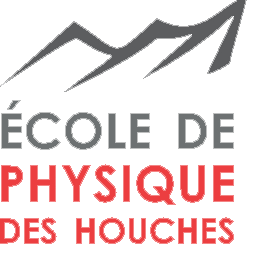The thorium-229 nucleus possesses a unique first excited state at an energy of only about 7.8 eV, coupled to the ground state by a transition with a natural linewidth in the mHz range. This transition can be used as a reference for an optical clock that is highly immune to field-induced frequency shifts and as a sensitive probe of temporal variations of fundamental constants [1]. Despite many...
Precise measurements of the fundamental properties of the proton such as its mass, lifetime, charge radius, and magnetic moment are important for our understanding of the physics of atomic and nuclear structure as well as for tests of fundamental symmetries. As one of very few particle-antiparticle pairs which are directly comparable, the proton and antiproton serve as an important laboratory...
In contrast to a conventional electron-ion plasma, the electron-positron pair plasma is characterized by the mass balance of the two components. Theoretical studies thus predicted long time ago a fundamentally new insight into plasma physics by studying these plasmas. Only recently experimental activities have become more precise e.g. by the APEX project which aims for the creation of a...
Quantum resource theories seek to quantify sources of non-classicality that bestow quantum technologies their operational advantage. Chief among these are studies of quantum correlations and quantum coherence. The former to isolate non-classicality in the correlations between systems, the latter to capture non-classicality of quantum superpositions within a single physical system. Here we...
The former $g$-factor experiment located in Mainz performed various $g$-factor measurements on highly charged ions, resulting in tests of bound state QED [1] and the most precise value for the atomic mass of the electron [2]. These measurements will be continued within a new experiment at the MPIK with access to heavier highly charged ions. Meanwhile the follow-up experiment in Mainz, which is...
The high-precision Penning-trap mass spectrometer PENTATRAP (1) is currently being commissioned at the Max-Planck-Institut für Kernphysik in Heidelberg. It aims at mass-ratio measurements of stable and long-lived highly-charged ions with a relative uncertainty of below $10^{-11}$, a precision so far only achieved for a few relatively light elements (2).
The mass-ratio measurement is carried...
A number of upgrades and stabilisation techniques to the BASE apparatus [1], motivated by improving upon the recent 1.5 ppb measurement of the antiproton $g$-factor [2] and other fundamental properties of the antiproton, are presented.
A new modified-cyclotron mode detection system has been commissioned and installed into the BASE apparatus. The primary function of this instrument is to...
Radio-frequency (rf) Paul traps operated with multifrequency rf trapping potentials provide the ability to independently confine charged particle species with widely different charge-to-mass ratios. In particular, these traps may find use in the field of antihydrogen recombination, allowing antiproton and positron clouds to be trapped and confined in the same volume without the use of large...
We present techniques tailored for sympathetic cooling and manipulation of a single (anti-)proton in a Penning trap system. Inside our trap a double-well potential is engineered for co-trapping an atomic ion, which enables for the use of quantum logic spectroscopy inspired cooling and readout schemes [1, 2]. These should allow for preparation at sub-Doppler temperatures and a readout of the...
The trends of nuclear binding-energies, obtained from high-precision atomic mass values, are sensitive to a wide range of nuclear structure phenomenon such as shell effects or onsets of collectivity. Hence, binding energies enable to track down the evolution of nuclear structure in yet unexplored region of the nuclear chart, also providing essential inputs to many nuclear models.
Three...
The main goal of the GBAR (Gravitational Behaviour of Anihydrogen at Rest) experiment is to test the week equivalence principle for $\bar{H}$, which has never been measured directly. In order to perform that very complex experiment, ultracold antihydrogen atoms ($\approx 10 \mu K$) are needed. As it is impossible to cool down neutrals to required temperature, GBAR is going to produce the...
Recent advances in trapped ion quantum technology have led to impressive results including the demonstration of four qubit GHZ states using subsequent entanglement gates [1] and a dc magnetometer with quantum enhanced sensitivity [2]. We will present the underlying technological advancements, starting with a high-speed multi-channel waveform generator developed in Mainz. The system delivers...
A cloud of trapped ions, represented here by a four level atomic system $\mid S_{1/2}>,\mid P_{1/2}>,\mid D_{3/2}>$ and $\mid D_{5/2}>$, is probed by the collection of photons from the transition $\mid P_{1/2}>$ to $\mid S_{1/2}>$.
![][1]
Figure : Four level atomic system of Ca+ ions
The lambda configuration with lasers at 866nm and 397nm allows for a two-photon dark state to take...
